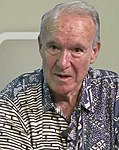| ||||||||||||||||||||
| ||||||||||||||||||||
 County results Waiheʻe: 50–60% 60–70% 70–80% | ||||||||||||||||||||
| ||||||||||||||||||||
| Elections in Hawaii |
|---|
 |
The 1990 Hawaii gubernatorial election was Hawaii's ninth gubernatorial election. The election was held on November 6, 1990, and resulted in a victory for the Democratic candidate, incumbent Governor John D. Waiheʻe III over the Republican candidate, State Representative Fred Hemmings. Waihee received more votes than Hemmings in every county in the state. [1]

